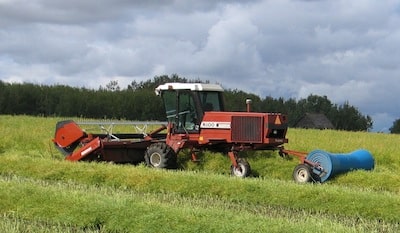10. Get the swather ready to go. You’ll have this routine down pat by now.
9. Determine if you’ll use glyphosate or Reglone to dry-down the crop. There are cautions with this, especially if the hope is to speed up maturity.
8. Does pod sealant make sense, especially if you’re thinking about leaving some canola standing for later swathing or straight combining?
7. How tight will you roll? Wind losses last year may encourage growers to cut higher and roll tightly into the standing stubble, but there are downsides to this in terms of dry down time, and potential disease spread within the windrow. Swath rolling tips.
6. Do you need pre-harvest weed control?
5. Do a pre-swath disease assessment. Checking from the swather is OK, too, as long as you can take the time to get off the swather a few times per field to clip stems and dig up plants to check their roots. Top 10 diseases to look for.
4. Follow pre-harvest intervals for pesticide applied in the weeks leading up to swathing.
3. Will you straight combine any canola this year? Consider what equipment you need, and how to assess which stands are best suited to straight combining. Read the Canola Encyclopedia chapter.
2. At what percent seed colour change (SCC) will you begin swathing? The ideal for yield and quality is 60% seed colour change, but growers with lots of canola to swath will probably have to cut some earlier — especially if late-seeded canola caught up to early-seeded canola and everything seems to be at the same stage.
1. Assess the maturity of all the canola fields on your farm to determine which fields will be ready first. SCC advances by about 10 percentage points every 2 or 3 days. Listen to Angela Brackenreed on assessing seed-colour change.
Top 10 things to address before you swath
